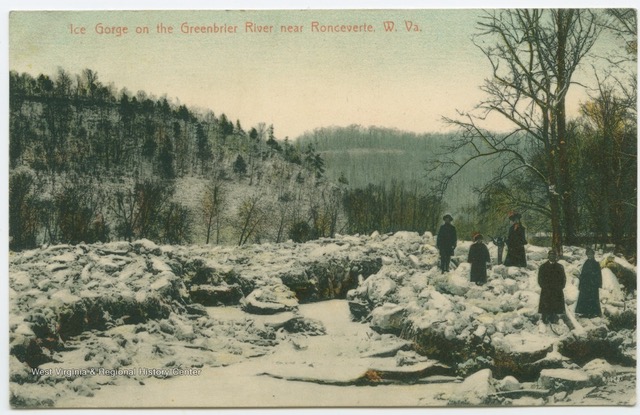Show above is a circa 1900 post card that shows an ice jam on the Greenbrier River near Caldwell. With recent mild winters it may be difficult to imagine that our local rivers and ponds ever froze. Before home refrigerators were commonplace, rivers, farm ponds, and mill ponds were sources of household ice. In the February 4, 1897 edition of The Greenbrier Independent ice harvesting was described, “For three days last week the Greenbrier River near the mouth of Stamping Creek presented a scene of wonderful activity. There were 40 men engaged in cutting ice and 30 teams hauling it away to the ice houses. The noise made by the men, horses, wagons, saws, axes and hoes was immense. Great merriment prevailed among the ice-cutters, not one seeming to mind the freezing ice or the cold biting wind, and when unfortunate one slipped and fell on the ice or into the vat, from which it had been cut, the whoops and yells that were indulged in at his discomfiture could be heard for miles ups and down the river. The river at this point is wide and deep, making it an excellent place to get large quantities of ice. The ice gotten was from 4 to 11 inches in thickness there was more of it put up this season than we have ever known in the history of ice getting here.”
A few years later in 1917, West Virginia was beset by another cold winter. The Ohio River froze solid for its entire length of 981 miles. The lowest temperature in the state that winter was 37 degree below zero set on December 30 in Lewisburg. Again in 1977, the Kanawha and Ohio rivers froze from bank to bank with January being the coldest month in state history with an average temperature of 16.9 degrees.
Postcard courtesy of the West Virginia & Regional History Center.
Sources: The Greenbrier Independent, WVNS.




